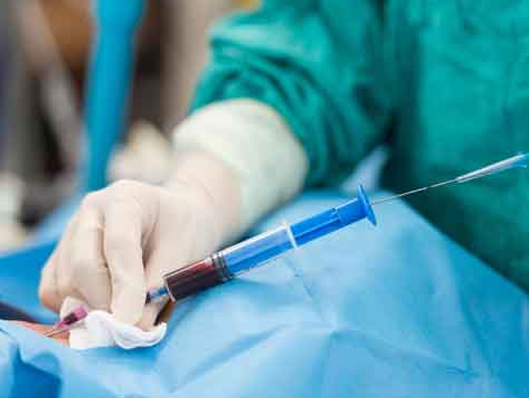Vascular Repair
Training for Vascular Surgeons
To become a vascular surgeon, a doctor undergoes several years of training, beginning with medical school and a medical residency.
After medical school, doctors must complete an additional five to seven years of specialized training in order to become vascular surgeons. This includes training in both traditional vascular surgery procedures as well as in minimally invasive endovascular surgery. Surgeons may then become board-certified in vascular surgery by taking a rigorous exam that measures their expertise in the diagnosis and treatment of vascular disease.
What Conditions Do Vascular Surgeons Treat?
A vascular surgeon treats many conditions that affect the blood vessels in every part of your body except for your heart and brain. This can include:

Aneurysm, a bulge or weak spot in an artery
Atherosclerosis, or hardening of the arteries, where plaque builds up on your artery walls
Carotid artery disease or peripheral artery disease (PAD), where the arteries that bring blood to your neck or limbs become narrow or blocked
Compression disorders like nutcracker syndrome and thoracic outlet syndrome
Dialysis access, or the placement of a graft or fistula that allows you to receive dialysis treatment for kidney disease
Deep vein thrombosis (DVT), a blood clot in a vein deep below your skin
Spider veins, or small webs of veins just below the surface of the skin
Trauma to arteries and veins caused by accidents or injuries
Varicose veins, or large, swollen, twisted veins that can cause pain or aching in your legs
Venous ulcers and arterial and diabetic (neuropathic) wounds, which are nonhealing wounds that result from poor blood flow, especially in the legs
Diagnosing Vascular Disease
To make a diagnosis, your vascular surgeon will start by talking with you about your medical history, lifestyle, and symptoms and give you a physical exam. If necessary, your surgeon may order additional tests, which can include:
Ankle brachial index, which is used to check the severity of PAD. During this test, your blood pressure is measured in both of your arms and both of your ankles, then compared.
Ultrasound, which can be used to diagnose many conditions. This test uses sound waves to make pictures of your blood vessels and is commonly used to diagnose aneurysms, carotid artery disease, and varicose veins.
Treating Vascular Disease
Vascular surgeons develop treatment plans to fit each patient’s needs. Depending on your condition, this might include:
Lifestyle changes, like quitting smoking, becoming more active, and choosing healthy foods
Medicines that lower your risk of blood clots
Catheter-based procedures, such as:
Ablation, which safely closes damaged blood vessels
Angioplasty, which uses a balloon to open up blocked arteries and veins
Stenting, which uses a tube of metal mesh to hold an artery or vein open to allow for healthy blood flow
Compression therapy, which uses special stockings to help manage symptoms like pain and swelling and increase blood flow
Sclerotherapy, or injections that safely close spider veins and varicose veins
Thrombolysis, which dissolves dangerous blood clots either through injections or a catheter
Surgery to repair or remove damaged or diseased blood vessels
